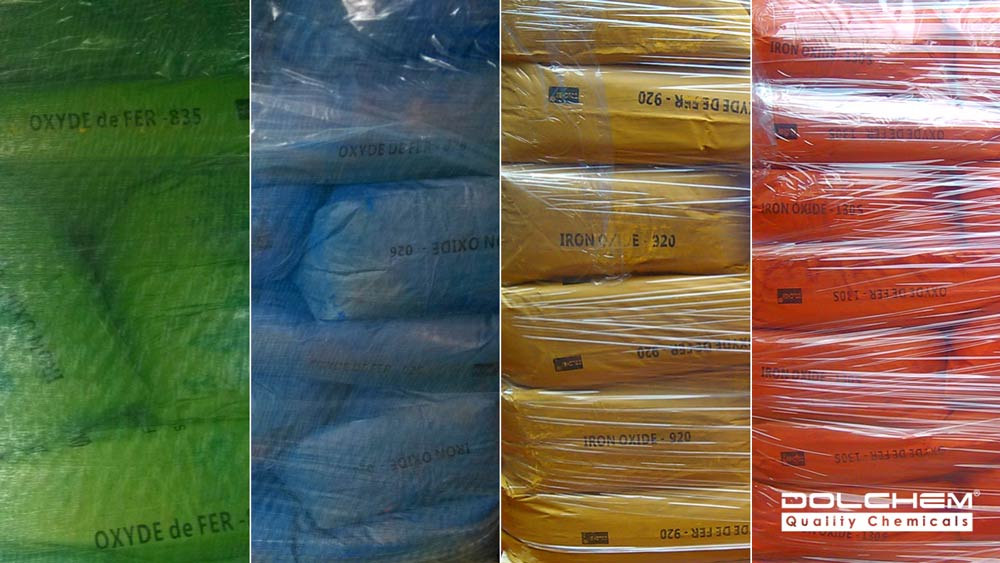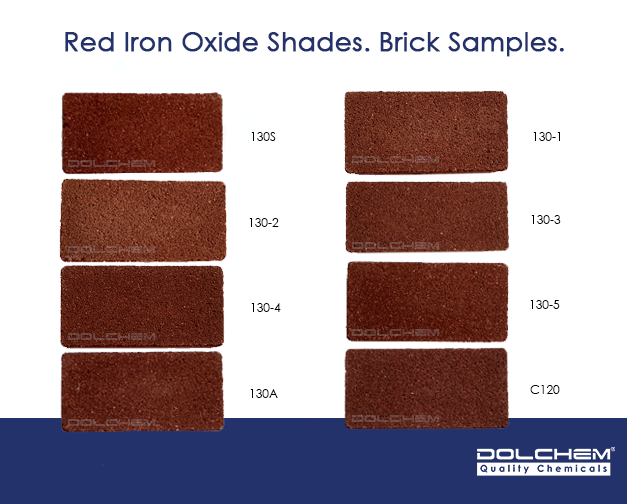Iron Oxide has gained the status of the most widespread and reliable coloring agent when it comes to inorganic pigments. This glory has not faded for decades even with more modern alternatives being introduced to the market. Whereas it’s hard to identify where Iron Oxide is applied the most, one cannot but sees its traces everywhere: from the concrete pavers underneath up to roof tiles above.

Common application of Iron Oxide:
- building materials,
- ceramic,
- pigmented mulch,
- asphalt,
- rubber and plastics,
- paint and coating,
- universal tint system.
Why is Iron Oxide so popular in construction?
Iron oxide pigments produce rich and durable colors in concrete and other cementitious materials. There are five essential components of this pigment that explain it:- Good weatherability,
- Good lightfastness,
- Excellent resistance in the alkaline environment of concrete
- Tinting strength (and thus bright color),
- Fine dispersion
Also, Iron oxide does not just dissolve in a mixture, it coats the surface of cement particles and does not change the color of sand or other aggregates in the mixture. This fact gives us two outcomes:
- Adding more pigment to the cement will not lead to a more intensive color, it will worsen the properties of the final product.
- Other aggregates may influence the final color.
There are just four key components that every manufacturer should have in mind when using iron oxide pigments to color concrete:
The quality of the pigment: Simply put, the good quality pigment is important. Finding a reliable and trustworthy supplier will eliminate such problems as improper blending and color inconsistency.
Water to cement ratio: “The more water used, the lighter the color” is easy to remember but not that easy to avoid. That’s why it’s crucial to mind the amount of water added to the mixture and remember that the effect achieved will be permanent. Read more about Zinc Stearate as a waterproofing agent for cement mortar and concrete.
Cement content: As it was mentioned before, the iron oxide pigment reacts with the cement particles, which means that it’s the base of the color. To better handle this issue, using the cement from the same batch and relying on a cement weight rather than on “a sack mix” in the formula is recommended.
Aggregate color: Normally, the aggregates are sand and gravel or crushed stone, and they do not give the same color to the final product.
If you are looking to add more color in your building materials production, but don’t know where to start, start with DOLCHEM. We will provide you with the product of your choice as well as with its technical data sheet and take care of shipping it to you.
Red, blue, yellow, black, green, brown and orange iron oxide pigments of all shades are available.

